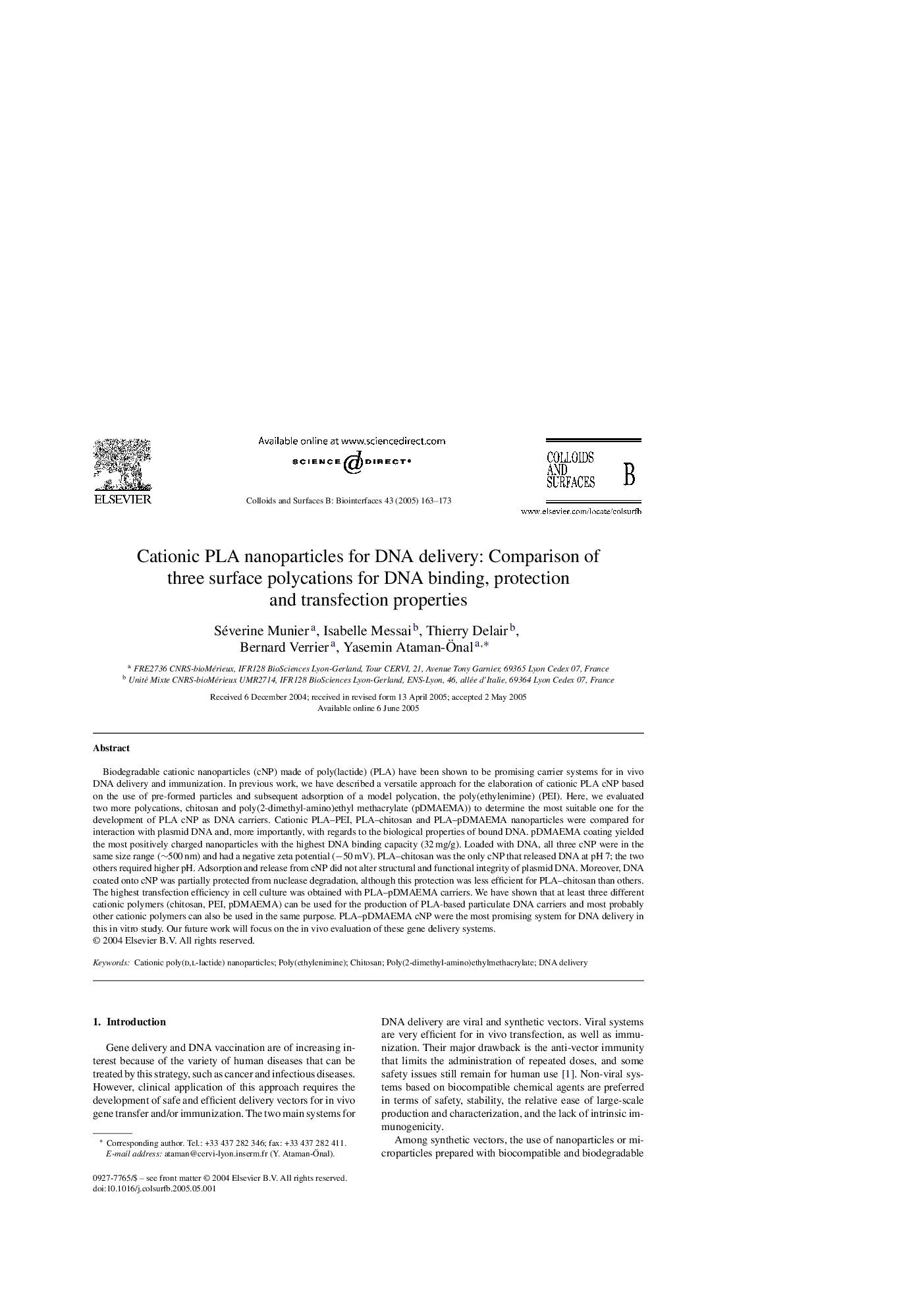| کد مقاله | کد نشریه | سال انتشار | مقاله انگلیسی | نسخه تمام متن |
|---|---|---|---|---|
| 9678353 | 1454323 | 2005 | 11 صفحه PDF | دانلود رایگان |
عنوان انگلیسی مقاله ISI
Cationic PLA nanoparticles for DNA delivery: Comparison of three surface polycations for DNA binding, protection and transfection properties
دانلود مقاله + سفارش ترجمه
دانلود مقاله ISI انگلیسی
رایگان برای ایرانیان
موضوعات مرتبط
مهندسی و علوم پایه
مهندسی شیمی
شیمی کلوئیدی و سطحی
پیش نمایش صفحه اول مقاله

چکیده انگلیسی
Biodegradable cationic nanoparticles (cNP) made of poly(lactide) (PLA) have been shown to be promising carrier systems for in vivo DNA delivery and immunization. In previous work, we have described a versatile approach for the elaboration of cationic PLA cNP based on the use of pre-formed particles and subsequent adsorption of a model polycation, the poly(ethylenimine) (PEI). Here, we evaluated two more polycations, chitosan and poly(2-dimethyl-amino)ethyl methacrylate (pDMAEMA)) to determine the most suitable one for the development of PLA cNP as DNA carriers. Cationic PLA-PEI, PLA-chitosan and PLA-pDMAEMA nanoparticles were compared for interaction with plasmid DNA and, more importantly, with regards to the biological properties of bound DNA. pDMAEMA coating yielded the most positively charged nanoparticles with the highest DNA binding capacity (32Â mg/g). Loaded with DNA, all three cNP were in the same size range (â¼500Â nm) and had a negative zeta potential (â50Â mV). PLA-chitosan was the only cNP that released DNA at pH 7; the two others required higher pH. Adsorption and release from cNP did not alter structural and functional integrity of plasmid DNA. Moreover, DNA coated onto cNP was partially protected from nuclease degradation, although this protection was less efficient for PLA-chitosan than others. The highest transfection efficiency in cell culture was obtained with PLA-pDMAEMA carriers. We have shown that at least three different cationic polymers (chitosan, PEI, pDMAEMA) can be used for the production of PLA-based particulate DNA carriers and most probably other cationic polymers can also be used in the same purpose. PLA-pDMAEMA cNP were the most promising system for DNA delivery in this in vitro study. Our future work will focus on the in vivo evaluation of these gene delivery systems.
ناشر
Database: Elsevier - ScienceDirect (ساینس دایرکت)
Journal: Colloids and Surfaces B: Biointerfaces - Volume 43, Issues 3â4, 10 July 2005, Pages 163-173
Journal: Colloids and Surfaces B: Biointerfaces - Volume 43, Issues 3â4, 10 July 2005, Pages 163-173
نویسندگان
Séverine Munier, Isabelle Messai, Thierry Delair, Bernard Verrier, Yasemin Ataman-Ãnal,